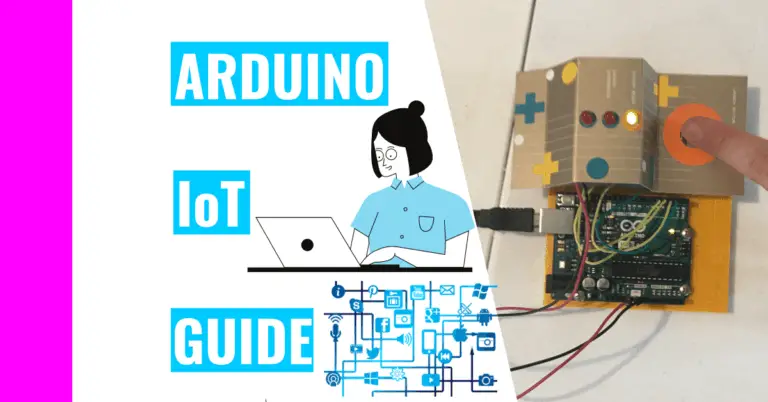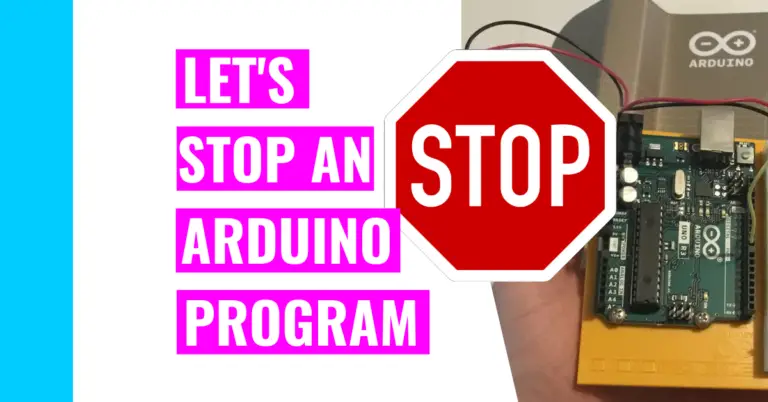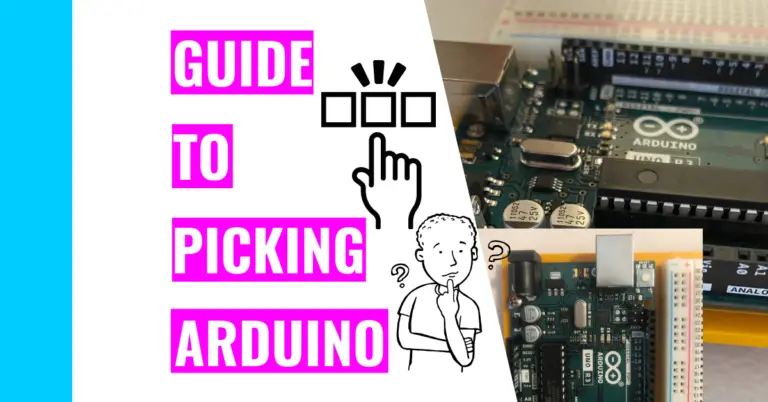Is Arduino Used In Industry? Here Are 7 Ways They’re Used!
Arduino is a great tool that can be used in different types of industries. I know a few people who were initially interested in Arduino, but then moved onto a different product because they didn’t think it was relevant in this day and age. They often wonder:
“Is Arduino even used in industry?”
Arduino is professionally used in education, entertainment, manufacturing, 3D printing, and live entertainment. They can even serve industrial purposes, though it’s not common. Arduino is most commonly used by engineers as a prototyping tool to help them physically visualize their design. This lets them add improvements before creating their final product to manufacture.
In order to help you understand these industries better, I’ve dissected my list with great detail for the rest of the article. Do note that the Arduino board was designed as a development board that’s not normally found in electrical products. Moreover, companies would only need the microcontroller chip, not the entire Arduino board itself.
Regardless, I hope this guide will show you how Arduino is used professionally today and in the future.
Why Isn’t Arduino Commonly Used For Industrial Purposes?
The Arduino isn’t suited for industrial purposes because it’s a development board. Since it doesn’t require soldering, the electrical connections you make aren’t permanent. It’s easy to stick the metal leads into the holes of the pin headers or the breadboard, but that also means that it’s easy for the leads to pop out of the holes. Soldering gets rid of this problem by creating permanent bonds.
Moreover, the Arduino board cannot handle the harsh, demanding environment. For example, the board cannot stand extreme temperatures (or large changes in temperatures), dust, humidity, etc. Additionally, the inputs and outputs of the board aren’t protected, which means they’re susceptible to short-circuits and overvoltages.
All these issues would not make the Arduino last very long, so people had to come up with an alternative that did the same thing as the Arduino but without all these problems. That’s where the programmable logic controller (also known as the PLC) came in. It’s the Arduino 2.0 with all the good stuff!
1. Prototyping
Arduinos are popular for creating prototypes to test ideas. Engineers, inventors, or those creating products all want a prototype as it allows them to test their ideas in the physical world.
You can think of a prototype akin to a rough draft in English class. Instead of putting all your ideas down on paper, you’re putting them all on a prototype made with an Arduino (or any other physical mockup). This gives you room for improvement before you actually make the final draft and mass produce it for consumers.
Here’s a simplified overview of coming up with a prototype:
- Come up with a solution to a common problem.
- The problem could be something you encounter frequently or something that others in Facebook groups or forums have complained about.
- Start sketching your product with well-defined functions. You can use graph paper or software to visually represent it.
- Create a prototype using your Arduino and any other necessary components to complement the solution. The design can be crude and unappealing. Don’t worry about appearances; you’re only focused on functionality first.
- Test your solution repeatedly. Do it first by yourself, and then let others try. Giving others the opportunity to test your product will let you gauge the ease of use your consumers may have with the product.
Thoroughly testing your product will also let you see its strengths and weaknesses. You will see what worked really well and what needs to be improved upon. Consequently, you have to repeatedly fix the issue in your product, test it again, find the issues, fix it again, etc.
Do keep in mind that this process of starting with a prototype to a selling product is a long and arduous journey. You’ll need to be dedicated, establish a concrete financial plan, and obtain the support of others (such as investors, collaborators, manufacturers, etc). In the end, you will be greatly rewarded for all your efforts (if there is demand for your product).
A great example is the Air Quality Egg. It’s based on the Arduino, and it utilizes the Arduino IDE. The product is marketed as both an educational tool and a product to help you determine the pollutants in the air.
2. Education
Because the Arduino was designed with the user in mind, it is simple and easy to use for everyone. It’s very beginner-friendly, which means educators can introduce the Arduino to students to help them learn the basics of electronics and programming.
For instance, the company Arduino has made Education Starter Kits geared towards students. One starter kit costs $276 (as of this writing), but it contains enough Arduino boards and components for up to 8 students. However, those 8 students will have to work in pairs because only 4 boards, 4 multimeters, and 4 breadboards come with it (in addition to the components).
In addition to hardware, you will gain access to over 25 hours of online learning material. You’d get 2 open-ended projects and 9 guided lessons. For teachers, they can get teacher’s notes, curriculum materials, evaluation guidelines, and time management tables.
You can even register and take the Arduino Fundamentals Test. If you do so successfully, you will get a certificate from the Arduino company themselves to prove your expertise in the field. However, it’s only valid for one year, and it costs around $30.
You should read my guide on getting the certificate to see what’s on the test and whether you should take it or not.
Regardless of whether you take the test for the certificate or not, you can definitely tutor kids or create an online course if you have enough expertise. I’d lean more towards creating an online course because you can rerecord your videos if you mess up, and you can reach a larger audience compared to tutoring students individually.
Here are some ideas of what you can teach:
- Basic circuitry
- Circuit schematics and wiring
- C ++ programming language
- Shields and modules
- IoT (Internet of Things)
- Motors and other electrical components
If you want to learn more about making money with Arduinos, I cover 11 different ways to do so in my other article. You can access it here.
3. Entertainment
Arduino is also used widely as a hobby. There are over 30 million active Arduino users, and the number is growing. It’s great for any age: young people use it to start learning about electronics and programming while older folks can continue their Arduino work by learning advanced techniques.
Arduino will stay relevant for a long time, and you can never learn everything. I even did a Facebook poll of 3 different Arduino groups and got the following result:

As you can clearly see, the majority (69%) of the participants believed Arduino to be a lifelong pursuit. I spoke with a few of them, and they strongly argued that Arduino takes a lifetime to master.
They chalked up the other answers to the Dunning-Kruger effect, which is where people overestimate their abilities because they’re unaware of the actual amount of material surrounding the subject. Nevertheless, these shorter responses showed me that you don’t need to know everything about Arduino to actually use it successfully.
As you can see, with all the users and relevancy that Arduino has, people can easily create and sell boards or kits related to Arduino. The products, though not used in other electronic products, is an industry in it of itself. For example, companies like Adafruit or Sparkfun take advantage of this and make lots of money.
4. Manufacturing
Arduino is a very versatile gadget that can be used for many different purposes. In this instance, it can be used for controlling milling machines, computer numerical control (CNC) machines, etc.
A CNC machine focuses on manufacturing telecommunications equipment with precision while a milling machine can help remove, cut, drill, and shape materials.
An Arduino has enough brainpower to serve as a CNC machine’s controller, but it’s not powerful enough to move the parts. That’s where other components like shields come into play.
Even though Arduinos can be used in industries to help control CNC machines, they aren’t too commonly used due to some of the issues I’ve mentioned previously.
5. 3D Printing
Like I’ve mentioned before, Arduinos can be used for manufacturing products. In this case, you can use an Arduino to create a 3D printer for either manufacturing or personal purposes.
3D printers are growing more and more popular, and they were declared commercially viable in 2018. Now, it’s becoming an important player in the manufacturing process.
I highly recommend Arduino users to create a 3D printer with an Arduino because it’s a great prototyping tool. 3D printers give you instant, inexpensive parts for your prototypes or projects. It is possible to create one since the first Arduino-based 3D printer was created in 2014 with the Arduino Mega 2560 board.
If you want to create a 3D printer with Arduino in your spare time, you should check out this step-by-step tutorial. Creating one yourself can save you money, and you’ll know the ins and outs because you built it yourself!
6. Live Entertainment
When you think of Arduino, you don’t normally think of live entertainment much less than this industry using Arduinos. However, as I’ve mentioned before, Arduino is very flexible and can play many roles just like actors.
When I talk about live entertainment, it can be anything ranging from theaters and TVs to films and concerts. I know a few people who’ve worked in this industry before, and they use both the Arduino and Raspberry Pi for certain circumstances such as special effects.
Understandably, you can order special equipment that doesn’t have Arduino to perform these functions. However, these workers sometimes need custom builds at the last second, so they can’t go through the prototyping and manufacturing stages quickly enough to churn out the product.
Some of the builds involve turning a motor or utilizing an LED (light-emitting diode) in which their normal stock of gear doesn’t contain.
7. Data Collection
Like I’ve mentioned in my other post on making money with Arduino, Arduinos can also be used to collect data.
To collect the data, the Arduino utilizes its inputs such as sensors or radio receivers. Then, you can store the data in the SD (secure digital) card or upload it to the cloud to be analyzed later.
There are many (lucrative) opportunities to capture, store, and sell data. For instance, you can use the Arduino to track plane movements for an airplane or use it to check the weather. Other examples can include but are not limited to:
- Checking traffic and movement of vehicles
- Analyzing the performance of machinery
- Inspecting the amount of electricity used in a household
- Dissecting the air quality to improve human health
- This is a function of the Air Quality Egg I previously mentioned
- Utilizing a Bluetooth proximity sensor to check whether two things are near each other
Summary – tl;dr (Too Long; Didn’t Read)
Here are the key takeaway points you should keep in mind after reading this article:
- Arduino can be professionally used in the following areas:
- Prototyping
- Education
- Entertainment
- Manufacturing
- 3D printing
- Live entertainment
- Data collection
- However, Arduino isn’t used for industrial purposes because:
- It’s a small development board
- Arduino cannot last very long
- Arduino can’t adapt to the harsh environment (think humidity, temperature, and dust)
In the end, I hope you realize the importance of Arduino and its different abilities on an industrial scale!
References
I’ve used the following source(s) for some parts of my article to ensure accuracy and relevancy.






